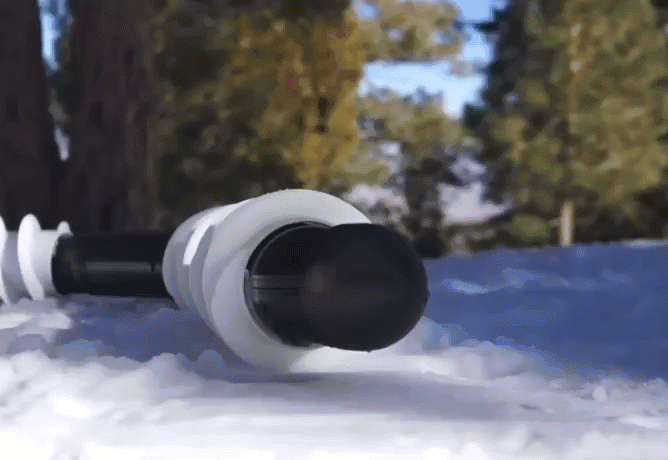
Despite residing in the frigid outer realm of our solar system where the Sun is just a faraway speck of light, icy moons like Saturn’s Enceladus and Jupiter’s Europa are considered some of the most tantalizing places to search for alien life — thanks to liquid oceans sloshing beneath their frozen surfaces.
Exploring such worlds won’t be easy even though their astrobiological potential. Spacecraft have flown by the moons, at times they zip through geysers like those on Enceladus that blast into space through cracks in its ice-covered surface, but no probe has ever explored these orbs in situ.
A new snake-like robot being developed at NASA’s Jet Propulsion Laboratory (JPL) could someday help scientists do just that.
The 14-foot-long robot, named Exobiology Extant Life Surveyor (EELS), is currently in its third year of development and has a goal to autonomously navigate icy surfaces and explore areas that are otherwise inaccessible to conventional, four-wheeled robots. The serpent-shaped robot has a “head” infused with cameras and sensors, including a laser-based system that creates maps of its environment — the same way autonomous cars can map out the world. The robot’s “body” is comprised of individual modules linked together that can host science instruments. It also has spiral connectors throughout the body to propel the robot forward.
EELS can get to places some rovers can’t
This technology, described in a paper published in Science Robotics, allows EELS to traverse on flat ground, wrap itself around an object to inch ahead, and tunnel through a narrow passage, thus changing its shape to get in and out of spaces where a conventional rover will be too big to fit.
“It represents very impressive state-of-the-art engineering,” says Manasvi Lingam, an astrobiologist at the Florida Institute of Technology. The robot is still in its early stages of development and is currently not part of any NASA mission. If it were to be sent to explore Enceladus, however, it would need to tunnel through several kilometers of ice to reach the moon’s subsurface ocean — a challenging task, he says, but “it might be able to search for biosignatures frozen in the surface ice.”

To understand how EELS navigates unfamiliar terrains, especially dimly lit ones where the robot’s cameras cannot create a good map of its surroundings, you can imagine walking into a room with lights off, says EELS project manager at JPL Matt Robinson. “If you’re not that familiar with the room, you can slow down and use your sense of touch to figure out where you’re going.”
EELS is programmed to perform the same action with its sensors while it provides input about just how much it is pushing against its environment, says Robinson. On destinations like Enceladus or Europa which are nearly a billion miles from Earth, the engineers can’t “joystick the robot” in real-time because it would take an hour to send a command and another hour to get a response. Hence, the necessity of autonomy. Robinson said his team has equipped the robot with the capability to recognize when it is stuck. It can then use a combination of visual cues and sensors to either push forward or change its shape to free itself, all without human assistance.
“Imagine a car driving autonomously, but there are no stop signs, no traffic signals, not even any roads,” said the project’s autonomy lead Rohan Thakker in a JPL statement. “The robot has to figure out what the road is and try to follow it. Then it needs to go down a 100-foot drop and not fall.”
While EELS’ sleek design and versatility are inspired by the desire to wiggle through narrow, plume-blasting vents on Enceladus, its engineers envision versions of the robot to also scope out cave-like structures on the Moon where astronauts may find shelter or explore hard-to-reach areas on Earth itself.
“There are dozens of textbooks about how to design a four-wheel vehicle, but there is no textbook about how to design an autonomous snake robot to boldly go where no robot has gone before,” said EELS principal investigator at JPL Hiro Ono. “We have to write our own. That’s what we’re doing now.”









